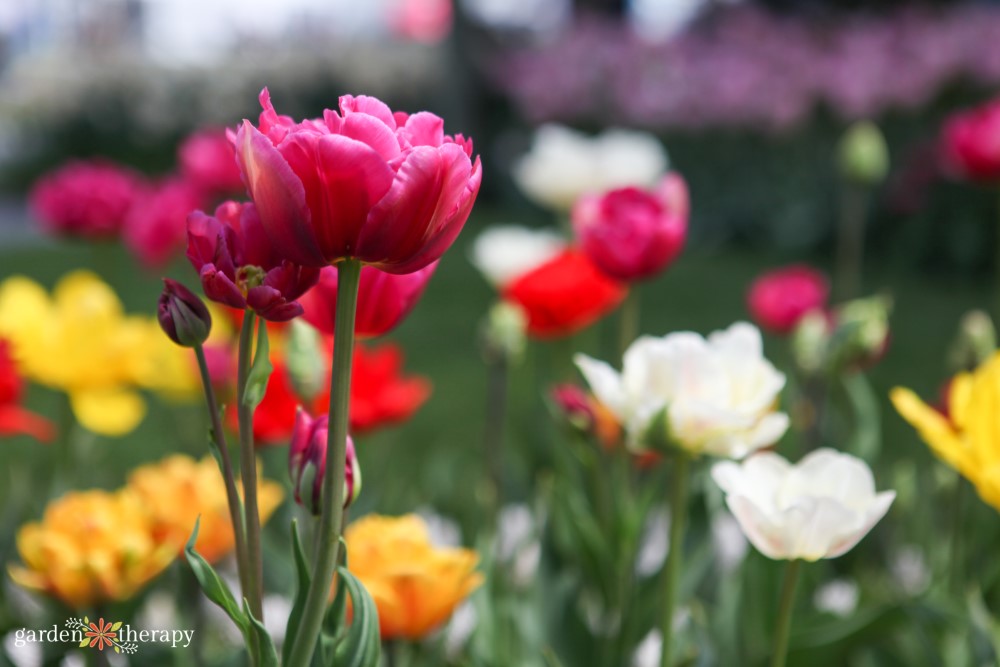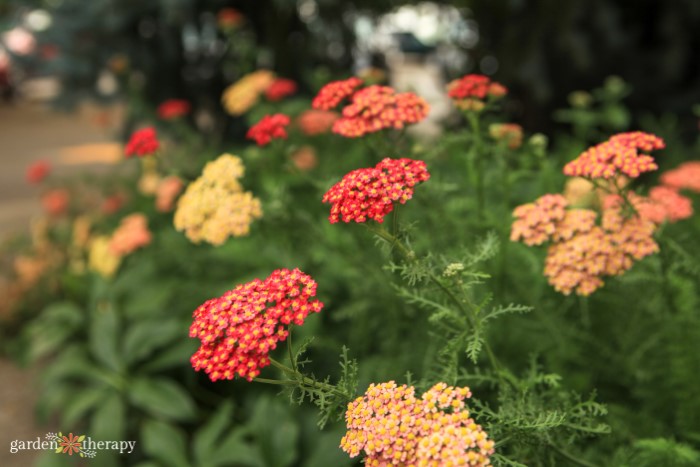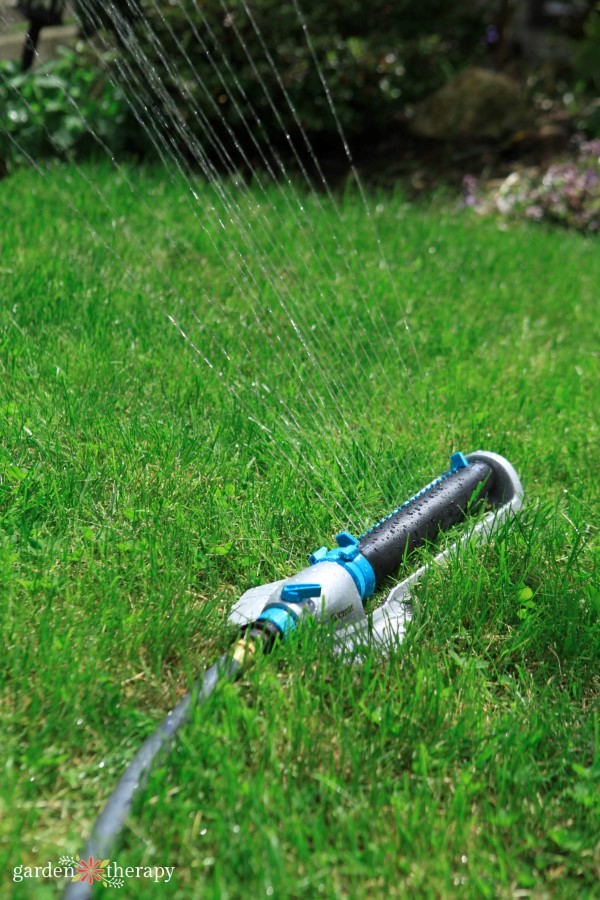As cute as deer are, they’re not always a welcome sight in the garden. One moment your hosta is there, the next moment it’s gone. These tips will help you keep deer out of the garden and maybe, just maybe, save your beloved hosta (and host of other plants).

Deer need to eat 6-8 lbs of fresh green growth every day—one deer could easily wipe out your garden and barely call it breakfast.
Bulbs and tender plants are like candy to deer, where they can completely decimate an entire shrub’s budding foliage and all those tulip plants you so painstakingly planted last fall.
For many areas, deer populations are actually on the rise. Due to the rise of urban areas, we’ve pushed many species out of their natural habitat, especially predators. The deer thrive, often continuing to live in these suburban and rural areas.
They’re even considered detrimental to other species as they chow down on the foliage in forested areas, damaging the habitat and food source of other animals.
Deer are a fundamental part of the food chain and many ecosystems, but they can certainly be a major frustration for gardeners. Today, we’re going to look at exactly what deer eat and how you can actually use that to your advantage.


What Is a Deer-Resistant Plant?
Many plants are labelled as “deer resistant” to market them. This term can be a little misleading, as deer will eat just about any kind of plant. It just depends on how desperate they are.
Deer-resistant plants will not be their first choice for food, but they will still eat them if they’re hungry and can’t find better options.
Deer prefer buds and bulbs, choosing to eat tender growth whenever possible. The deer in your area will also prefer native plant species, since that’s what is naturally in abundance and what they’re used to.
Unfortunately, this means that non-native plants are marketed as deer resistant, and people will gravitate towards them even though they’re not beneficial to the local ecosystem (such as all those local pollinators and songbirds).
The time of year also plays a part. In the winter, there are fewer scrumptious things for the deer to be feasting on. In fact, the bacteria in their stomach shift in the winter to allow them to eat bark and other more fibrous foods they wouldn’t normally eat.
As lovers of buds and bulbs, they will be ravenous in the spring when all the tender plants are beginning to emerge. In the summer, there is lots for them to eat and they’re less likely to feast on your garden when they have so many options around them.


Deer-Resistant Plants to Grow
While they still may feast on these plants, these deer-resistant plants are more likely to put up a fight in the garden.
- Fuzzy and soft foliage such as lamb’s ear, yarrow, Siberian bugloss, lady’s mantle, poppies, ageratum, or bunny tail.
- Prickly and pokey plants, such as sea holly, globe thistle, bear’s breeches, or barberry.
- Herbs and plants with strong flavour and taste, such as sage, lavender, chive, allium, mint, dill, thyme, Russian sage, or salvia.
- Other plants that deer tend to avoid include peonies, bleeding heart, daffodil, spurge, false indigo, foxglove, boxwood, most begonias, and most grasses.


Deer Fence: The First Line of Defence
The best way to keep deer away from your property is to build a deer fence around the perimeter. This is where you build a fence tall enough to prevent the deer from jumping over.
Deer can jump up to 12 ft. when they’re in stressed situations, but won’t often jump higher than 8 ft. when they’re just rummaging for food.
Deer will try their best to go under and even through a fence. While plastic fencing may work for a year or so, the deer will eventually figure out how to get through it. Metal fencing is the most durable and long-lasting way to make a deer fence.
The problem with deer fences is that they’re a lot of work and money to make. They’re also not the most attractive for home gardens. This solution is often best for those with larger properties and high-value goods they want to protect.
Building a Wildlife Hedge to Keep Deer Out
Another option is to build a wildlife hedge as a living fence. The key is to use brambles, plants that are thorny and dense, such as blackberry, salmonberry, or raspberry. They work as a great natural barrier to keep deer and other animals out of your garden.
As a bonus, it also provides a little haven for small critters like rabbits or squirrels to hang out in.
To help with keeping the deer out, make the outside of your property barrier on the other side of the wildlife hedge a deer buffet. Here are some plants that deer LOVE:
Give them something to feast on outside, and they will be less likely to try and break through the brambles to your side.
Small-Scale, Inexpensive Solutions
For us urban and suburban gardeners, we can still deal with deer and their feasting on precious greens. When building a full-on wildlife hedge or tall fence isn’t an option, there are a few other tricks you can try.
To immediately get them out of the way, you can try installing automatic sprinklers and lights to scare them any time they set foot in the area. Look for a taller sprinkler and move it around every few days to target a different portion of the garden for maximum efficiency.
If you have a few precious plants, wrap them in a wire cage to protect them, though I understand this isn’t always the prettiest option. Physical barriers, including netting and row covers, are the best at keeping deer away.
And once again, you can willingly give the deer something to feast on. Dedicate a portion of the garden to native species and those plants listed above that deer love to munch on. Hopefully, this allows them to stay clear of your green prized possessions.


Keeping Deer Out of the Garden FAQs
I haven’t heard of predator urine actually working well enough to keep deer away. If a spray is the route you want to take, there are many commercial deer repellents that would be a more effective option. The trick to the repellents is to use them often, applying at least once a week and every time after it rains. These work best as a secondary defence.
Many commercial sprays rely on the scent of rotten eggs to work. If you’re feeling up to it, you can include rotten eggs in my pest deterrent spray recipe as a deer deterrent. Other good ingredients to include are hot peppers and garlic.
There is no scientific evidence to suggest that coffee grounds keep deer away, but it is often touted as a homemade recipe. The theory is that the smell is so strong and pungent to the deer that they avoid the area.
Other Tips to Help With Garden Pests
A city girl who learned to garden and it changed everything. Author, artist, Master Gardener. Better living through plants.

